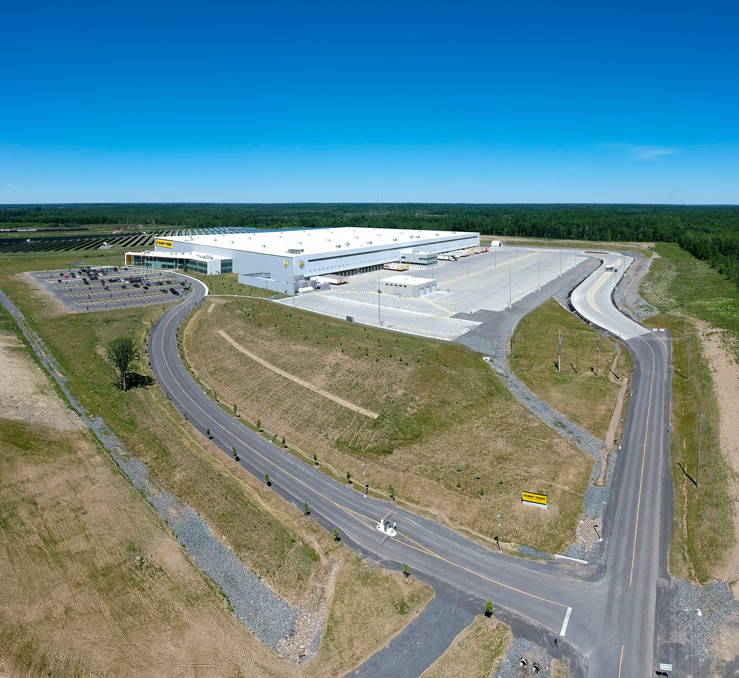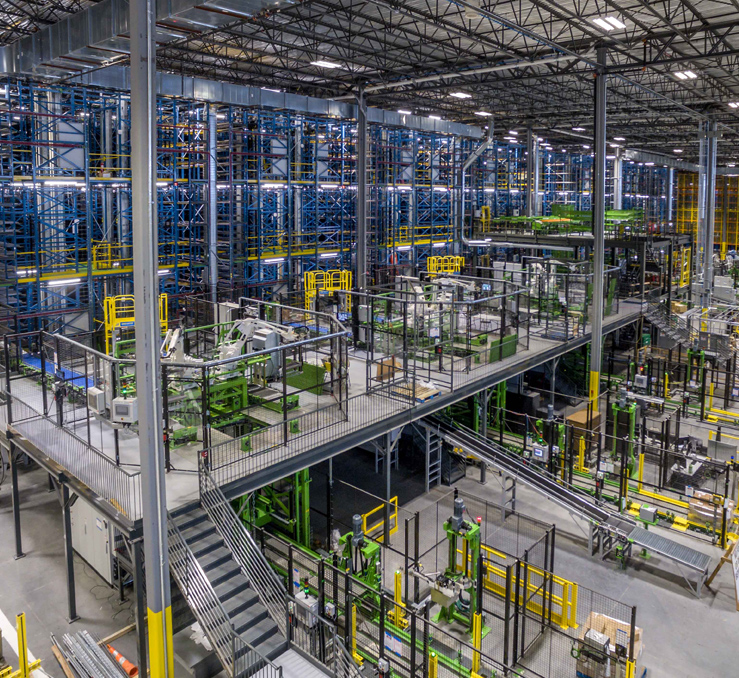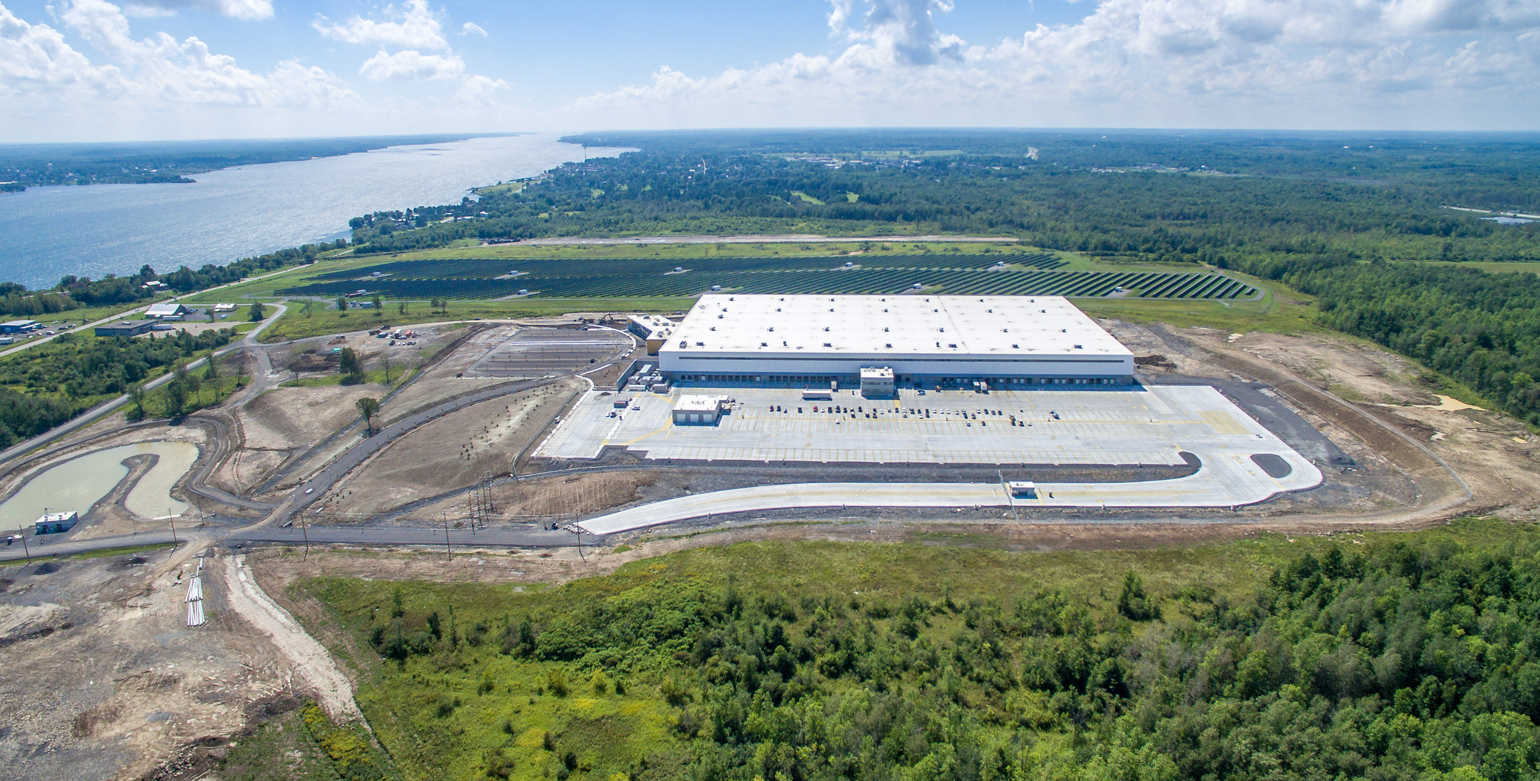The sole sourced award of this 600,000sqft facility to Lundy construction was the culmination of a 20 year working relationship with Giant Tiger. Awe-inspiring in scale, the building is equivalent to 10 CFL sized football fields and is five stories high to the underside of the steel roof structure.
This building is key to Giant Tiger’s ability to quickly replenish the shelves of each of its 250+ stores in Canada. To meet this demand, the building features the latest in warehouse technology with 210 individual autonomous robots that move freely up, down and across racks of inventory to deposit or retrieve cases at speeds up to 40 km an hour, as well as specialty robots used for unpacking and packing pallets in the most efficient way possible.
The building was fully completed in 18 months from breaking ground, and delivered for occupancy to the Giant Tiger on exactly the day promised on Day One. The large scale of the project meant that all stages of work had to be planned meticulously to meet the tight timelines. At the peak of the steel erection stage, over 110,000 square feet of structure was constructed every week. The siteworks component of the project was also vast, encompassing over 520,000 square feet of roller compacted concrete (used instead of asphalt in the truck parking areas), a pump house / holding pond to supply water for the fire protection systems, and a separate truck maintenance facility.
With over 300 workers on site for the majority of the project, including the robotics and metal racking forces, Lundy was responsible for all site safety and ensured there wasn’t a single lost time injury over the duration of the project.
The flatness and levelness of the concrete floor slab is critical in warehouse construction. Lundy’s quality assurance program helped ensure that Giant Tiger slabs exceeded the stringent requirements of the project specification. Also of particular note was the focus placed on ensuring the on-site coordination of thousands of connection points of the Owner’s equipment with building services. This was especially apparent in the planning efforts around ensuring the robotics systems had every necessary electrical supply location determined in advance.


